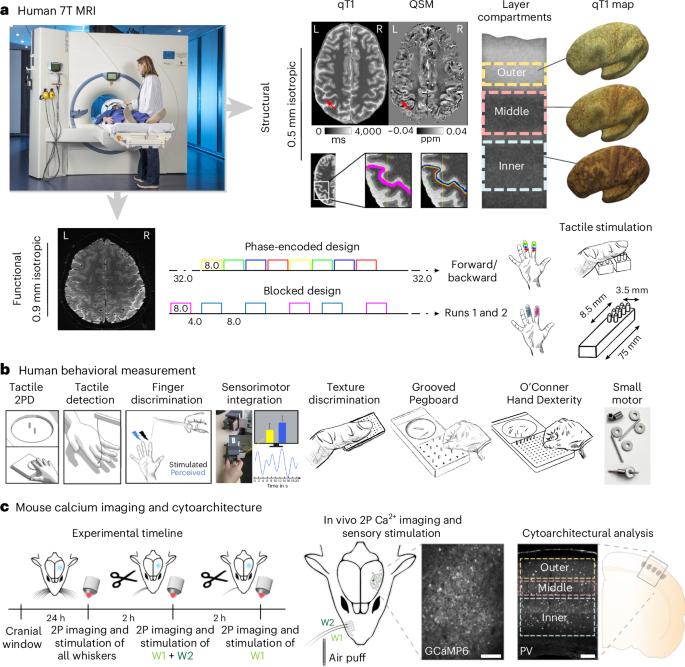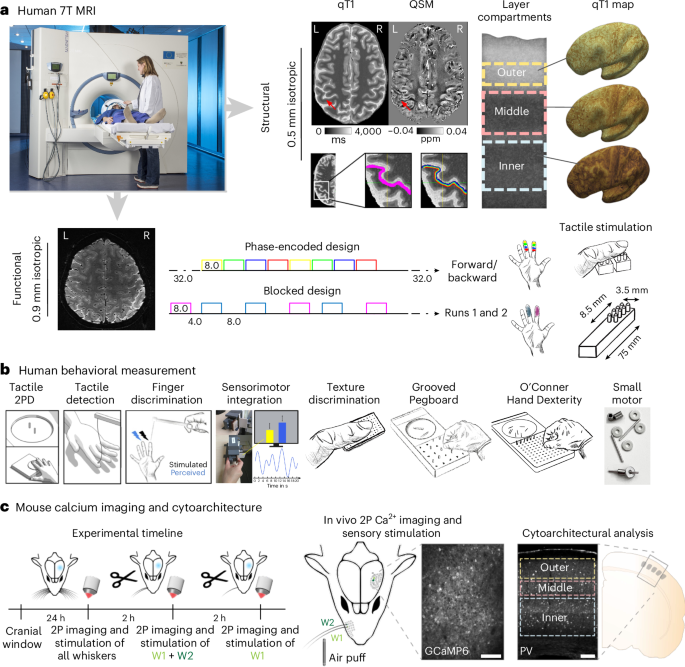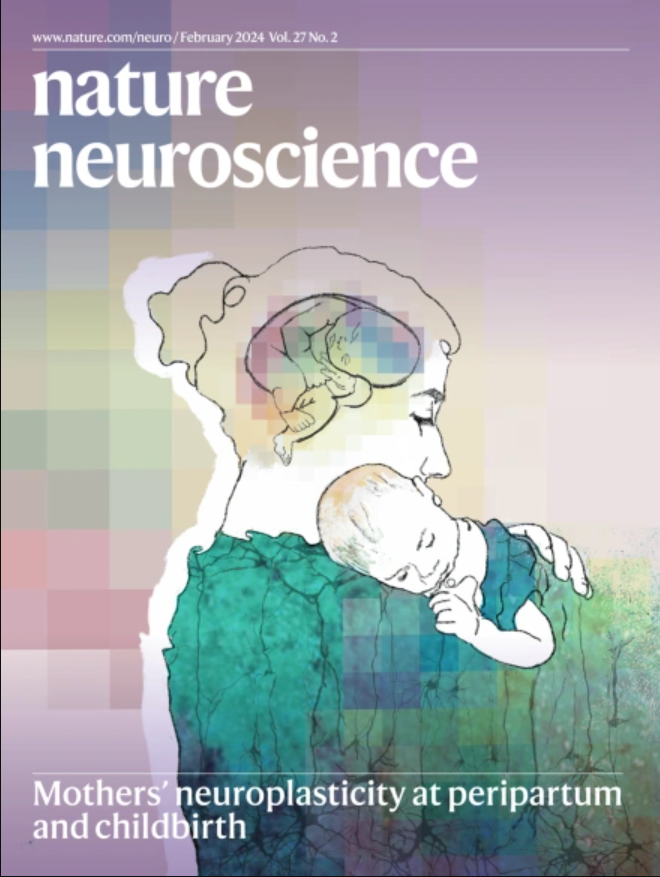Layer-specific changes in sensory cortex across the lifespan in mice and humans
IF 20
1区 医学
Q1 NEUROSCIENCES
引用次数: 0
Abstract
The segregation of processes into cortical layers is a convergent feature in animal evolution. However, how changes in the cortical layer architecture interact with sensory system function and dysfunction remains unclear. Here we conducted functional and structural layer-specific in vivo 7T magnetic resonance imaging of the primary somatosensory cortex in two cohorts of healthy younger and older adults. Input layer IV is enlarged and more myelinated in older adults and is associated with extended sensory input signals. Age-related cortical thinning is driven by deep layers and accompanied by increased myelination, but there is no clear evidence for reduced inhibition. Calcium imaging and histology in younger and older mice revealed increased sensory-evoked neuronal activity accompanied by increased parvalbumin expression as a potential inhibitory balance, with dynamic changes in layer-specific myelination across age groups. Using multimodal imaging, we demonstrate that middle and deep layers show specific sensitivity to aging across species. The principal layer architecture of the sensory cortex is altered with aging. The authors show that overall thinning of the primary somatosensory cortex is driven by deep layer degeneration but that layer IV is more pronounced in old age.


小鼠和人类一生中感觉皮层的层特异性变化
在动物进化过程中,过程分离成皮质层是一个趋同的特征。然而,皮层结构的变化如何与感觉系统功能和功能障碍相互作用仍不清楚。在这里,我们对两组健康的年轻人和老年人的初级体感觉皮层进行了功能和结构层特异性的体内7T磁共振成像。老年人的第四输入层增大,有更多髓鞘,并与扩展的感觉输入信号有关。年龄相关的皮层变薄是由深层驱动的,并伴随着髓鞘形成的增加,但没有明确的证据表明抑制作用降低。年轻和老年小鼠的钙成像和组织学显示,感觉诱发的神经元活动增加伴随着小白蛋白表达的增加,这是一种潜在的抑制平衡,在不同年龄组中,层特异性髓鞘形成发生了动态变化。使用多模态成像,我们证明了中层和深层对不同物种的衰老表现出特定的敏感性。
本文章由计算机程序翻译,如有差异,请以英文原文为准。
求助全文
约1分钟内获得全文
求助全文
来源期刊

Nature neuroscience
医学-神经科学
CiteScore
38.60
自引率
1.20%
发文量
212
审稿时长
1 months
期刊介绍:
Nature Neuroscience, a multidisciplinary journal, publishes papers of the utmost quality and significance across all realms of neuroscience. The editors welcome contributions spanning molecular, cellular, systems, and cognitive neuroscience, along with psychophysics, computational modeling, and nervous system disorders. While no area is off-limits, studies offering fundamental insights into nervous system function receive priority.
The journal offers high visibility to both readers and authors, fostering interdisciplinary communication and accessibility to a broad audience. It maintains high standards of copy editing and production, rigorous peer review, rapid publication, and operates independently from academic societies and other vested interests.
In addition to primary research, Nature Neuroscience features news and views, reviews, editorials, commentaries, perspectives, book reviews, and correspondence, aiming to serve as the voice of the global neuroscience community.
 求助内容:
求助内容: 应助结果提醒方式:
应助结果提醒方式:


